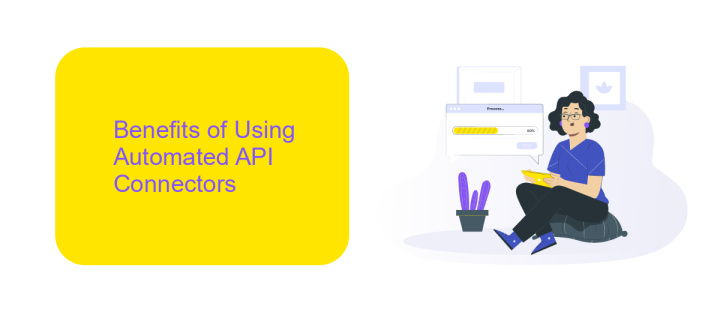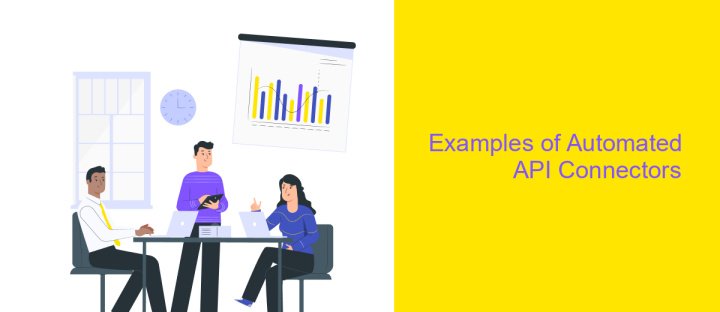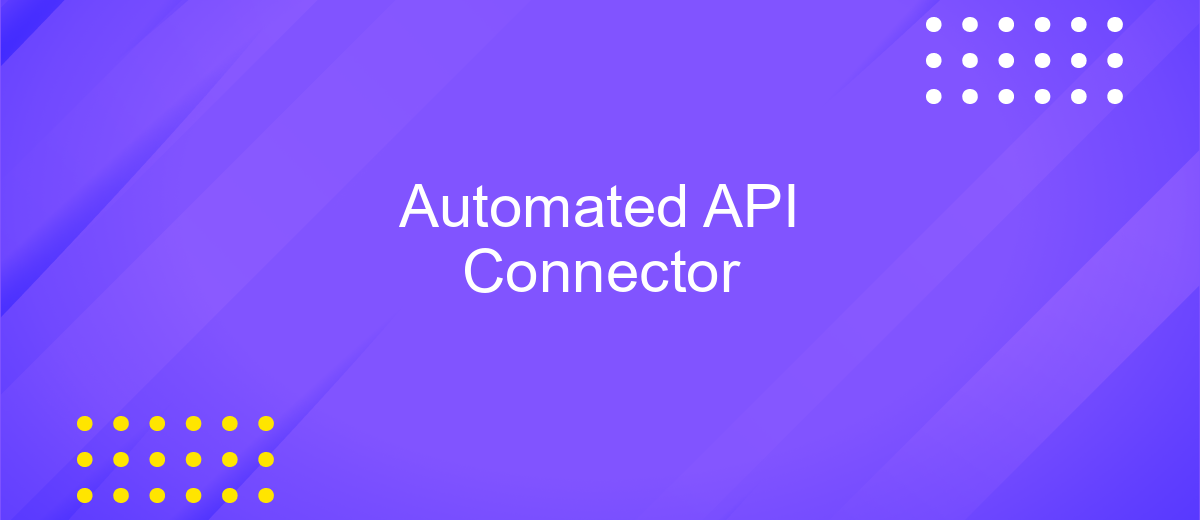Automated API Connector
In today's rapidly evolving digital landscape, seamless integration between diverse software systems is crucial for maintaining efficiency and competitiveness. Automated API Connector serves as a pivotal tool, enabling businesses to effortlessly link their applications and data sources. By automating the API connection process, this solution reduces manual intervention, minimizes errors, and accelerates data flow, ultimately empowering organizations to focus on innovation and strategic growth rather than technical hurdles.
Introduction
In today's rapidly evolving digital landscape, the ability to seamlessly integrate various software systems is crucial for businesses striving for efficiency and innovation. Automated API connectors have emerged as a pivotal solution, enabling organizations to automate data exchanges between disparate applications without manual intervention. These connectors not only streamline workflows but also enhance data accuracy and accessibility, empowering businesses to focus on strategic growth rather than operational bottlenecks.
- Reduce manual data entry and associated errors
- Enhance real-time data synchronization across platforms
- Facilitate scalability by integrating new applications effortlessly
- Improve decision-making with timely and accurate data
- Optimize resource allocation by automating routine tasks
As enterprises continue to adopt a multitude of cloud-based applications, the demand for efficient and reliable data integration solutions is more pressing than ever. Automated API connectors offer a robust framework for achieving seamless interoperability, ensuring that businesses can adapt swiftly to changing market demands. By leveraging these tools, companies can not only enhance their operational efficiency but also drive innovation and maintain a competitive edge in the digital economy.
Benefits of Using Automated API Connectors

Automated API connectors offer significant advantages by streamlining the integration process between different software systems. They eliminate the need for manual coding, reducing the time and resources required to establish connections. This automation facilitates seamless data exchange, ensuring that information is consistently updated across platforms, which enhances operational efficiency and minimizes errors. By leveraging automated connectors, businesses can focus on core activities rather than spending valuable time on integration challenges.
Moreover, services like ApiX-Drive make setting up these integrations even more accessible. ApiX-Drive provides a user-friendly interface that allows non-technical users to connect various applications without deep technical knowledge. This democratization of integration capabilities empowers organizations to quickly adapt to changing business needs and scale their operations effortlessly. By utilizing automated API connectors, companies can improve their agility and responsiveness, gaining a competitive edge in the fast-paced digital landscape.
How Automated API Connectors Work

Automated API connectors streamline the process of integrating different software systems by managing the data exchange between them. These connectors serve as intermediaries that facilitate seamless communication, allowing applications to work together efficiently without manual intervention. They are crucial in today's digital landscape, where businesses rely on multiple applications to perform various functions.
- Data Mapping: The connector identifies and maps data fields between the source and destination systems, ensuring compatibility.
- Authentication: It handles the authentication process, securely connecting to APIs using keys or tokens to access data.
- Data Transformation: The connector transforms data into the required format, ensuring it can be correctly processed by the receiving system.
- Error Handling: Automated connectors detect and manage errors during data transfer, ensuring reliability and continuity.
- Scheduling: They allow for scheduled data transfers, automating the process according to predefined intervals or triggers.
By automating these processes, API connectors reduce the need for manual coding and intervention, saving time and resources for businesses. They enhance operational efficiency by ensuring data is consistently and accurately exchanged between systems, enabling organizations to focus on core activities rather than technical integration challenges.
Examples of Automated API Connectors

Automated API connectors are essential tools for seamless data integration and communication between different software systems. They enable businesses to streamline workflows, reduce manual errors, and enhance operational efficiency. By automating the process of connecting to various APIs, companies can save time and resources, allowing developers to focus on more strategic tasks.
These connectors are particularly useful in industries where data exchange is frequent and critical. For instance, in e-commerce, automated API connectors can synchronize inventory levels, update product information, and process orders in real-time. In finance, they can automate transactions, update account details, and generate reports, ensuring accurate and timely data management.
- Zapier: Connects multiple apps and automates workflows without requiring coding skills.
- Integromat: Offers advanced automation capabilities with an intuitive drag-and-drop interface.
- Microsoft Power Automate: Integrates with numerous Microsoft and third-party services to automate routine tasks.
- MuleSoft: Provides a robust platform for building API-led connectivity across applications.
By leveraging these automated API connectors, organizations can enhance their digital ecosystems, ensuring that data flows smoothly and securely across platforms. This capability not only boosts productivity but also supports better decision-making by providing real-time insights and analytics.
- Automate the work of an online store or landing
- Empower through integration
- Don't spend money on programmers and integrators
- Save time by automating routine tasks
Conclusion
In conclusion, the development and implementation of an Automated API Connector significantly streamline the integration process between diverse systems, enhancing efficiency and reducing manual workload. By automating data exchange, businesses can ensure seamless communication between applications, thereby improving operational workflows and accelerating innovation. This technology not only simplifies complex integration tasks but also provides scalability and flexibility, adapting to the evolving needs of modern enterprises.
Services like ApiX-Drive exemplify the potential of automated API connectors by offering user-friendly solutions that require minimal technical expertise. With its intuitive interface and robust functionality, ApiX-Drive enables businesses to effortlessly connect various applications, ensuring data consistency and reliability. As organizations continue to seek ways to optimize their operations, embracing automated API connectors becomes increasingly vital. These tools not only foster greater collaboration across platforms but also empower businesses to focus on strategic growth initiatives rather than getting bogged down by technical challenges. Ultimately, the adoption of such solutions is a crucial step towards achieving digital transformation and maintaining a competitive edge in today's fast-paced market.
FAQ
What is an Automated API Connector?
How does an Automated API Connector work?
What are the benefits of using an Automated API Connector?
How can I set up an Automated API Connector?
What should I consider when choosing an Automated API Connector service?
Strive to take your business to the next level, achieve your goals faster and more efficiently? Apix-Drive is your reliable assistant for these tasks. An online service and application connector will help you automate key business processes and get rid of the routine. You and your employees will free up time for important core tasks. Try Apix-Drive features for free to see the effectiveness of the online connector for yourself.


